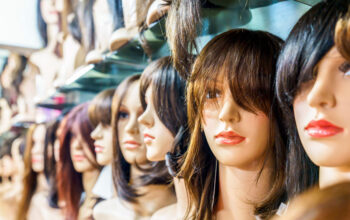There can be no high-quality or exquisite jewelry collection without at least one piece of rhinestone jewelry, whether it is vintage or modern.
Vintage rhinestone jewelry is a beautiful and valuable ornament because of the time and care put into its creation. They are in high demand and should be part of any woman’s jewelry collection. The wearer of this beautiful piece of jewelry will take on a mysterious glow and expression. Unfortunately, the term “original antique rhinestone jewelry” is often used to group together pieces of jewelry that are not of the highest quality or are not highly sought after.
Lucky for you, the history, styles, types of brands, and even value of vintage rhinestone jewelry will all be discussed in this article.
The term “rhinestone” refers to a specific kind of gem.
Ask any native Austro-Hungarian and they’ll tell you that the precious stones known as rhinestones originated from the Austrian region around the Rhine River, whence the name originates. Even though rhinestone is defined as a fake stone made of diamonds, gem quartz, or glass by respected dictionaries like Merriam-Webster, the name “rhinestone” really refers to a kind of gemstone. In reality, both of these readings are appropriate.
One that is embellished with crystals
Rhinestones are a kind of gemstone that may be found in a wide range of Vintage rhinestone jewelry and on a wide variety of outfits due to their dazzling look. Almost everything in a modern retail store, from jewelry to purses to socks and apparel, has sparkling rhinestones. The glimmering effect is amplified when worn with various accessories.
- That rhinestones can’t be told apart from diamonds is a common complaint. Because of their lower price and the similarity of their appearance when sewn into garments, rhinestones are often used as a diamond alternative in stage and film productions.
- Historically, the term “rhinestone” solely referred to the rare and valuable gems that were mined from the Rhine. It is presently usual practise to use the same word to designate Swarovski crystals, regular glass stones, and inexpensive plastic stones.
- Many different shapes, sizes, and cuts of rhinestones are commercially available. Oval, square, or rectangular shapes are all possibilities. Round stones, often called chatons, are the most frequent kind of rhinestone.
- When it comes to possible colours and finishes, the Aurora Borealis rhinestones are unrivalled.
Surfaces are often given a satin or matte finish to provide a faint gloss or serve as a suitable colour base.
Whence Came the Craze for Antique Rhinestone Jewelry?
Jewelry set with rhinestones has a history at least as old as the stones themselves. Rhinestones have been used in antique jewelry since at least 1680.
Bead necklaces originated in this era, when jewellers began stringing Rhine River “pebbles” together. The rhinestones were meticulously prepped before usage, including cleaning, cutting, and polishing. The rhinestones were polished to enhance their already stunning appearance, making this an item highly sought after by the elite.
Conclusion
To appreciate how dazzling the stones are, you need just glance at them for a few seconds. Keep in mind that the striking visual effect is the consequence of tiny imperfections that guide light in various directions.




